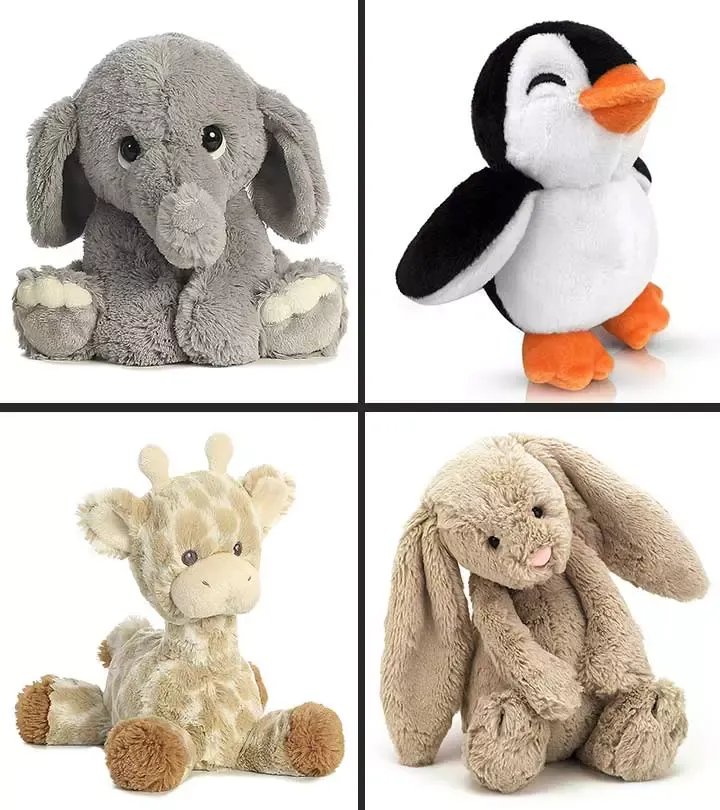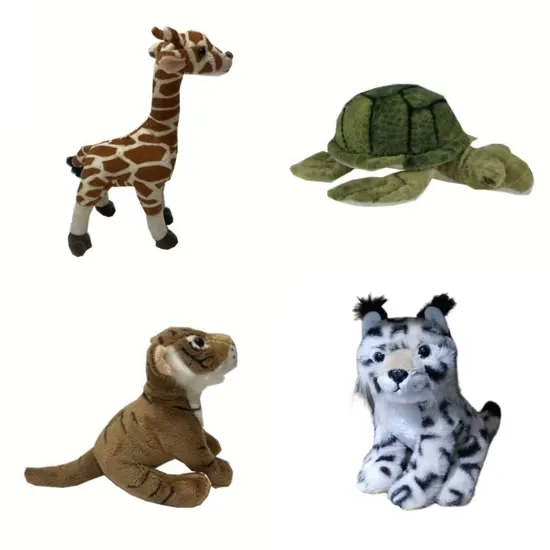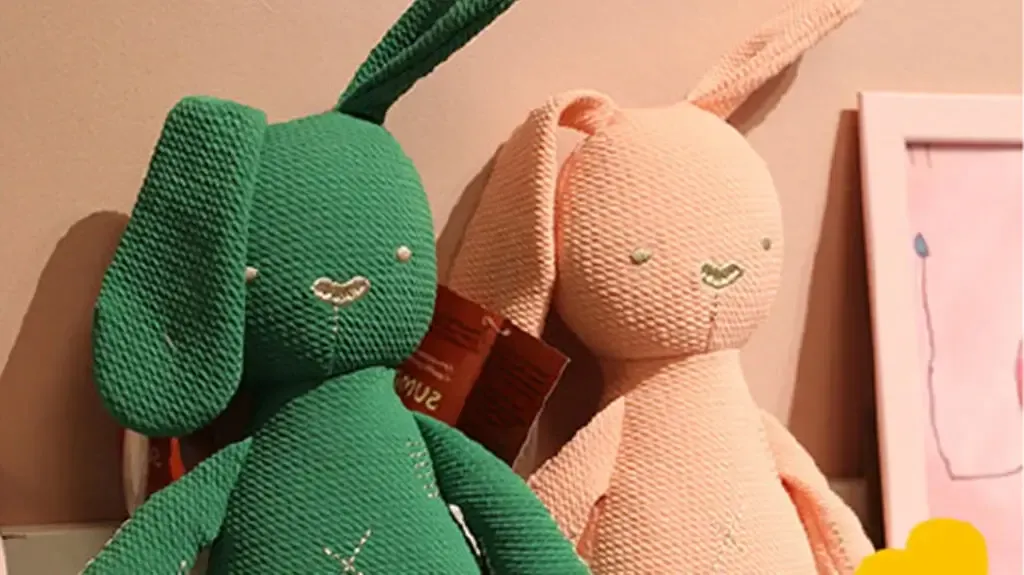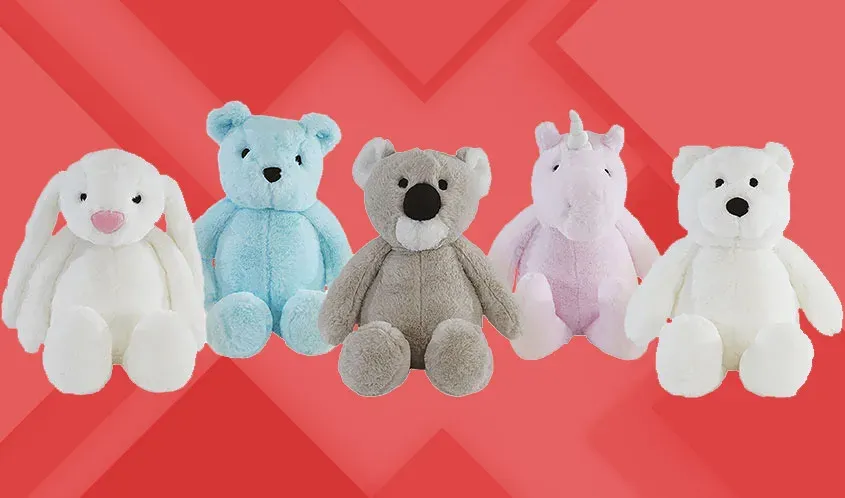When it comes to children’s plush toys, safety is far more than just a buzzword — it’s a non-negotiable priority for parents, caregivers, and manufacturers alike. Plush toys are cherished companions for kids, often becoming their trusted comfort objects, yet many are unaware of what truly goes into making these soft friends safe. Understanding the materials behind plush toys helps protect children from harmful substances while ensuring durability, comfort, and environmental responsibility.
In short, safe materials for children’s plush toys include non-toxic, hypoallergenic fabrics and fillings that comply with strict safety standards such as ASTM F963 and EN71. Common safe materials are organic cotton, polyester plush, natural latex, and certified recycled fibers. Knowing these can help you make informed choices for your child’s health and happiness.
Imagine a child clutching a beloved teddy bear passed down through generations — behind its softness lies a careful balance of design, testing, and sustainable material selection that ensures it’s as safe as it is cuddly. Curious about what makes plush toys safe and how manufacturers achieve this? Let’s dive deep.
1. What Are the Most Common Materials Used in Children’s Plush Toys?

The majority of children’s plush toys are made from a combination of fabrics and stuffing designed to be soft, durable, and safe. Common materials include polyester plush fabric, cotton blends, microfiber, and filling materials such as polyester fiberfill, natural latex foam, and sometimes beans or pellets for weight.
These materials offer the right balance of softness and resilience, allowing plush toys to withstand years of play while maintaining their shape and safety.
- Polyester Plush Fabric: Popular for its softness, durability, and cost-effectiveness. It is synthetic but can be produced with certifications like Oeko-Tex to ensure no harmful chemicals are present.
- Organic Cotton: Increasingly favored for its natural, hypoallergenic properties and environmental benefits. Organic cotton is grown without pesticides, making it safer for sensitive skin.
- Fillings: Polyester fiberfill is the most widely used stuffing due to its hypoallergenic nature and resilience. Natural fillers like wool or latex are less common but used in premium toys.
- Blended Fabrics: Some plush toys combine cotton and polyester to balance breathability with durability.
- Pellets and Beans: For weighted toys or sensory plush, non-toxic plastic pellets or natural beans may be used, but must be securely enclosed to prevent choking hazards.
Understanding these materials helps you recognize what’s typical in the industry and why certain fabrics and fillings are preferred to meet both safety and comfort standards.
| Material Type | Description | Key Features | Notes |
|---|---|---|---|
| Polyester Plush Fabric | Soft, durable synthetic fabric widely used for plush toy exteriors | Softness, durability, cost-effective | Often Oeko-Tex certified to ensure safety |
| Organic Cotton | Natural fiber grown without pesticides, hypoallergenic and eco-friendly | Hypoallergenic, environmentally friendly | Ideal for sensitive skin |
| Fillings (Polyester Fiberfill) | Common stuffing material, hypoallergenic and resilient | Soft, safe, maintains shape | Most widely used stuffing |
| Natural Fillings (Wool, Latex Foam) | Premium stuffing options with natural origin | Natural, biodegradable | Less common, used in high-end toys |
| Blended Fabrics | Combination of cotton and polyester to balance breathability and durability | Breathable, durable | Offers softness with strength |
| Pellets and Beans | Non-toxic plastic pellets or natural beans used for weighting or sensory effect | Adds weight, tactile interest | Must be securely enclosed to avoid choking hazard |
2. Which Materials Are Considered Non-Toxic and Hypoallergenic for Kids?

Safe plush toy materials must be free from harmful chemicals and allergens to protect children’s health. Non-toxic materials are those that don’t release harmful substances like phthalates, lead, or formaldehyde, while hypoallergenic materials minimize allergic reactions.
Certified organic cotton, Oeko-Tex Standard 100 polyester, and natural latex are among the top hypoallergenic, non-toxic choices.
- Certifications Matter: Look for materials tested under Oeko-Tex Standard 100 or GOTS (Global Organic Textile Standard), which verify absence of toxic chemicals.
- Phthalate and Lead-Free: These are banned substances in children’s products in most countries, so materials must be certified free from these.
- Hypoallergenic Fillings: Polyester fiberfill is preferred for hypoallergenic properties, while wool can sometimes cause allergies.
- Dye and Treatment Safety: Even if the fabric is safe, harmful dyes or flame retardants may pose risks. Opt for toys labeled free from harmful dyes and chemical finishes.
- Label Transparency: Trusted manufacturers provide detailed material information and safety certifications on packaging.
Choosing hypoallergenic and non-toxic materials not only prevents allergic reactions but also supports long-term health for sensitive children. For customized, certified safe plush toys, contact Kinwin to explore options tailored to your needs.
| Aspect | Details | Notes |
|---|---|---|
| Non-Toxic Materials | Free from harmful substances like phthalates, lead, and formaldehyde | Certified materials ensure safety |
| Hypoallergenic Materials | Minimize allergic reactions; polyester fiberfill preferred; wool may cause allergies | Important for sensitive children |
| Certifications | Oeko-Tex Standard 100, GOTS (Global Organic Textile Standard) | Verify absence of toxic chemicals |
| Phthalate and Lead-Free | Banned substances in children’s products; materials must be certified free from these | Compliance with international safety regulations |
| Dye and Treatment Safety | Avoid harmful dyes, flame retardants; choose toys labeled free from chemical finishes | Critical to avoid skin irritation or toxicity |
| Label Transparency | Manufacturers provide detailed material info and safety certifications on packaging | Helps parents make informed choices |
3. How Do Manufacturers Ensure the Safety of Plush Toy Materials?

Manufacturers employ rigorous testing and quality controls to make sure every plush toy is safe. This includes material testing for chemical safety, physical safety tests to prevent choking or sharp edges, and durability testing.
Compliance with international safety standards such as ASTM F963 (US) and EN71 (Europe) is mandatory for trusted manufacturers.
- Chemical Testing: Includes screening for heavy metals, phthalates, formaldehyde, and banned substances. Third-party labs often conduct these tests.
- Flammability Tests: Materials must meet strict flammability requirements to minimize fire risk.
- Physical Safety Tests: Assessing seams, choking hazards from small parts, and mechanical durability to withstand wear and tear.
- Quality Control Systems: Advanced manufacturing setups use batch testing, traceability, and continuous inspections to ensure consistent quality.
- Sustainability Audits: Some manufacturers incorporate sustainability audits to verify responsible sourcing and eco-friendly processes.
- Documentation: Compliance certificates and material safety data sheets (MSDS) back the safety claims.
By ensuring every material batch passes safety protocols, manufacturers protect children and uphold their reputation. Kinwin integrates these practices in all plush toy production, guaranteeing peace of mind.
| Safety Measure | Description | Purpose/Notes |
|---|---|---|
| Chemical Testing | Screening for heavy metals, phthalates, formaldehyde, and banned substances by third-party labs | Ensure materials are free from toxic chemicals |
| Flammability Tests | Testing materials to meet strict fire resistance standards | Minimize risk of fire hazards |
| Physical Safety Tests | Checking seams, small parts, choking hazards, and mechanical durability | Prevent choking and ensure toy withstands wear and tear |
| Quality Control Systems | Batch testing, traceability, and continuous inspections during manufacturing | Maintain consistent product quality |
| Sustainability Audits | Verification of responsible sourcing and eco-friendly manufacturing processes | Ensure ethical and sustainable material sourcing |
| Documentation | Compliance certificates and Material Safety Data Sheets (MSDS) | Provide proof of safety and regulatory adherence |
4. Are Eco-Friendly and Sustainable Materials Safe for Plush Toys?

Eco-friendly materials are gaining traction due to growing environmental awareness, but their safety must be evaluated just as strictly. Biodegradable plastics, organic fibers, and recycled materials can be safe, but require thorough testing to avoid chemical contamination.
Sustainability and child safety go hand in hand when proper standards are met.
- Biodegradable Plastics: Derived from plant sources like PLA, these must be tested for durability and absence of harmful residues.
- Recycled Fibers: Using recycled polyester or cotton helps reduce waste, but contamination from previous uses must be eliminated through thorough cleaning and testing.
- Organic Fibers: Organic cotton, bamboo, and hemp provide natural, safe alternatives with low chemical footprint.
- Certifications: Look for GOTS, OEKO-TEX, and bluesign certifications that confirm both eco-friendliness and safety.
- Durability vs. Biodegradability: Some biodegradable materials degrade too fast for long-lasting toys, so a balance is crucial.
- Consumer Perception: Eco-friendly toys appeal to conscious buyers but transparency about safety testing is essential to build trust.
Adopting sustainable materials responsibly supports the planet without compromising child safety. Kinwin offers eco-conscious plush toy lines backed by rigorous safety compliance and material sourcing transparency.
| Material Type | Safety Considerations | Notes |
|---|---|---|
| Biodegradable Plastics | Must be tested for durability and absence of harmful residues | Derived from plant sources (e.g., PLA); balance longevity and biodegradability |
| Recycled Fibers | Require thorough cleaning and testing to remove contamination | Includes recycled polyester and cotton; reduces waste |
| Organic Fibers | Naturally safe with low chemical footprint | Examples: organic cotton, bamboo, hemp |
| Certifications | GOTS, OEKO-TEX, bluesign verify eco-friendliness and safety | Ensure materials meet both environmental and health standards |
| Durability vs. Biodegradability | Some biodegradable materials may degrade too quickly for toy use | Important to balance environmental benefits with product longevity |
| Consumer Perception | Eco-friendly toys appeal to conscious buyers | Transparency in safety testing builds consumer trust |
5. Do Innovative Materials Improve the Safety and Functionality of Plush Toys?

Innovations in textile and material technology are enhancing plush toys’ safety and functionality. Antimicrobial fabrics, smart textiles, and stain-resistant coatings improve hygiene and durability.
However, these technologies must be evaluated for safety, comfort, and cost-effectiveness before wide adoption.
- Antimicrobial Fabrics: Help reduce bacteria and odor, ideal for plush toys used frequently or in healthcare settings. Safety of antimicrobial agents must be certified.
- Smart Textiles: Embedded sensors can enable interactive features, but electronics must be safely enclosed to avoid hazards.
- Stain-Resistant Coatings: Keep toys looking new longer, but coatings should be non-toxic and skin-friendly.
- Allergen-Reducing Materials: New fabrics can reduce dust mite accumulation, benefiting allergic children.
- Cost and Scalability: Innovative materials may increase costs and require specialized manufacturing, impacting availability.
- Future Trends: Biodegradable smart textiles and sensor-integrated plush toys may transform the market in coming years.
Innovations offer exciting opportunities but must align with rigorous safety standards. Kinwin embraces cutting-edge materials carefully to enhance user experience while prioritizing child safety.
| Innovation Type | Benefits | Considerations |
|---|---|---|
| Antimicrobial Fabrics | Reduce bacteria and odors, improve hygiene | Antimicrobial agents must be certified safe |
| Smart Textiles | Enable interactive features via embedded sensors | Electronics must be securely enclosed to prevent hazards |
| Stain-Resistant Coatings | Keep toys looking new longer | Coatings should be non-toxic and skin-friendly |
| Allergen-Reducing Fabrics | Reduce dust mite accumulation, benefit allergic children | Effectiveness varies, must be tested for safety |
| Cost and Scalability | May increase costs and require specialized manufacturing | Could affect product availability and pricing |
| Future Trends | Biodegradable smart textiles, sensor-integrated plush toys | Emerging tech with potential market transformation |
6. How Can Parents Identify Safe Plush Toys When Shopping?

Parents should check for labels, certifications, and material information when choosing plush toys. Recognizing signs of quality and safety helps avoid hazards.
Key safety marks include ASTM F963, EN71, CE marking, and Oeko-Tex certification.
- Check Labels and Packaging: Look for safety standard logos and detailed material descriptions.
- Material Transparency: Avoid toys without clear fabric or filling information.
- Recalls and Reviews: Research if the toy model has safety recalls or consumer complaints.
- Age Appropriateness: Ensure toys meet recommended age guidelines to avoid choking hazards.
- Smell Test: Avoid toys with strong chemical odors indicating harmful residues.
- Purchase from Reputable Brands: Trusted manufacturers invest more in safety and quality control.
- Regular Inspection: Parents should periodically check toys for damage or wear that might compromise safety.
By staying informed and vigilant, parents can confidently select plush toys that bring joy and comfort without risk. For custom, safe, and high-quality plush toys, contact Kinwin today to discuss your specific needs.
| Safety Tip | Details | Notes |
|---|---|---|
| Check Labels and Packaging | Look for safety logos (ASTM F963, EN71, CE, Oeko-Tex) | Verify certifications and material details |
| Material Transparency | Avoid toys lacking clear fabric or filling information | Transparency helps ensure safety |
| Recalls and Reviews | Research product recalls or consumer complaints | Helps avoid hazardous products |
| Age Appropriateness | Confirm toys match recommended age to prevent choking hazards | Crucial for safe play |
| Smell Test | Avoid toys with strong chemical odors | Indicates possible harmful residues |
| Purchase from Reputable Brands | Trusted brands invest in safety and quality control | Reduces risk of unsafe products |
| Regular Inspection | Periodically check toys for damage or wear | Maintains ongoing safety |
Common Safe Plush Toy Materials
| Material Type | Safety Features | Common Use | Certifications |
|---|---|---|---|
| Polyester Plush Fabric | Durable, non-toxic with certification | Toy outer fabric | Oeko-Tex Standard 100 |
| Organic Cotton | Hypoallergenic, chemical-free | Outer fabric, gentle skin | GOTS, USDA Organic |
| Polyester Fiberfill | Hypoallergenic, resilient stuffing | Toy filling | Oeko-Tex, ASTM compliance |
| Natural Latex Foam | Natural, biodegradable | Stuffing (premium toys) | FDA, EN71 compliance |
| Biodegradable Plastics | Plant-based, eco-friendly | Pellets, toy accessories | ASTM D6400, EN13432 (compostable) |
| Antimicrobial Fabrics | Bacteria-resistant, hygienic | Specialty plush toys | Tested per EPA/FDA regulations |
Choosing safe materials for children’s plush toys is a thoughtful process that involves understanding fabric and filling options, evaluating certifications, and balancing innovation with tradition. By partnering with trusted manufacturers like Kinwin, who uphold strict quality and safety standards, you ensure every plush toy is a safe, comforting companion for children worldwide.
Ready to customize your plush toy line with certified safe, eco-friendly, and innovative materials? Reach out to Kinwin today to discuss your project and get a personalized quote tailored to your exact needs.




